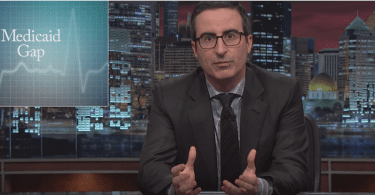President Trump has released his budget, and it puts programs for vulnerable Americans on the...
Medicaid
The latest on ACA, Medicaid and Medicare
This year, Trump’s budget does not include cuts to either Social Security or Medicare. But...
What becomes of Medicare and Medicaid after the presidential...
In an opinion piece for the Wall Street Journal, Drew Altman, president of the Kaiser Family...
At least 12 million uninsured are eligible for free or low-cost...
More than 12 percent of U.S. residents under 65 were uninsured in March 2015, according to a new...
Who provides long-term services and supports?
Most older adults choose to remain in their communities as they age as long as they can. In order...
Medicare and Medicaid at 50: Their roles in our health care...
A 2015 article in Health Affairs by Drew Altman and Bill Frist speaks to Medicare and Medicaid at...
John Oliver: Republicans are blocking access to health insurance...
In this video segment, John Oliver explains how the Supreme Court hurt millions of Americans by not...
Cutting edge small nursing homes: Green Houses
If you’re looking into nursing homes for yourself or someone you love, consider a Green...
Half a million people with low incomes unable to get mental...
In 1996, the Mental Health Parity Act was signed into law to guarantee that insurers did not...
Vast majority of Americans want to expand Medicare and Social...
A new Kaiser Family Foundation survey of Americans reveals that the public views Medicare and...










